| Super Compact Cameras
GoPro is definitely leading the way in this category. The GoPro is super wide angle, so plan on getting close to your subject, to really fill the frame. The GoPro can be used alone, or attached to your larger camera housing allowing you to capture video at the same time as taking still photos. There are limited controls, but these little cameras are capable of capturing some pretty amazing video. Macro lenses and deep water housing sets, such as the 300’ rated HugyFot – with an external monitor and more, are also available. There are also several options for trays, arms and lighting – for even better underwater video results.
|
|
Advantages:
- Extra small size – good for travel.
- Inexpensive.
- Very easy to use
|
|
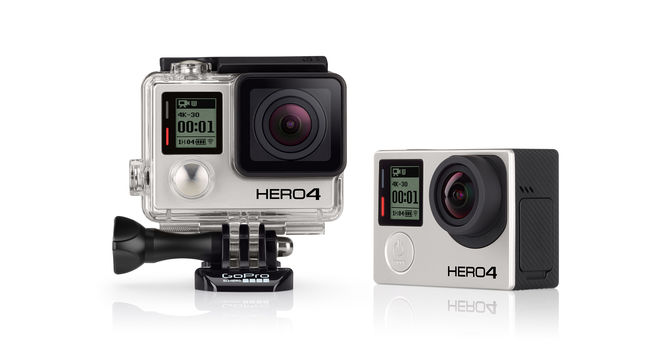
GoPro Hero 4
|
_________________________________________________________________________________
|
Compact Cameras
Compact cameras have come a long way in shooting video. Many compact cameras now even have manual white balance and/or built-in underwater presets – try them out, they can do a pretty good job in shallower water.
|
|
Advantages:
- Very small size – good for travel.
- Inexpensive.
- Easy to use – some even have underwater modes.
- Power zoom lenses just like a camcorder.
- Many have more advanced capabilities like fast lenses and macro settings.
|
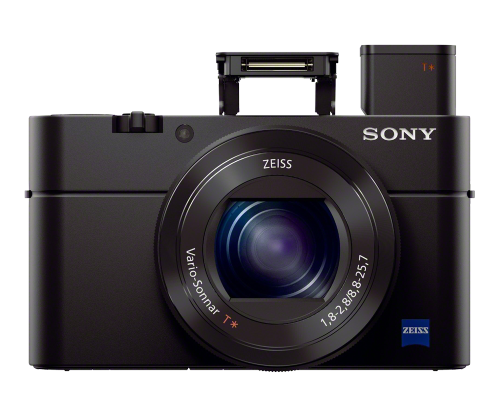
Sony RX100 III
|
| |
| Recommended Compact Cameras: |
Olympus TG-3:
Olympus keeps things simple and affordable by also making underwater housings for their cameras. We have been pretty impressed by their Tough series – shock-proof, freeze-proof and water-proof! Now they have the TG-3, talk about a fun camera! It is waterproof to 50 feet without the housing (nice for snorkeling) and – in the inexpensive Olympus housing; it’s waterproof to 150 feet (45m). It has manual white balance, underwater preset modes and a very fast f1.7 sharp ED lens. This camera can shoot great Macro using it’s microscope mode.
Image Sensor: BSI CMOS 1/2.3” 16 Megapixel
Best video setting - 1920 x 1080 at 30 fps
|
Sony RX100 III:
For more money, you can get even more features with the Sony RX100 III. It has a very large DSLR size sensor, so it is even better in low light with its fast f1.8, high quality Zeiss lens. As Sony comes from the video world the camera is packed with excellent video controls and features. This Sony camera can also shoot full HD video at a higher frame rate of 60p.
Image sensor: Exmor® R 1.0” CMOS (13.2 X 8.8mm) (3:2 aspect ratio) 20.9MP
Best video setting - 1920 x 1080 at 60 fps
|
_________________________________________________________________________________
|
Mirrorless Cameras
Mirrorless cameras have the flexibility of interchangeable lenses and a larger sensor– in a smaller package than a DSLR. Some cameras like the Sony A7, with its full frame sensor, might even rival or surpass some of the the crop frame DSLRs.
|
|
Advantages:
- Focus capabilities – they have continuous auto focus like a camcorder has, which works well underwater.
- Some of the lenses even have electronic zoom capabilities.
- Can shoot video in any of the camera modes – using those same settings – just with a push of a button.
- Image stabilization, the camera does the work of holding the image steady.
|
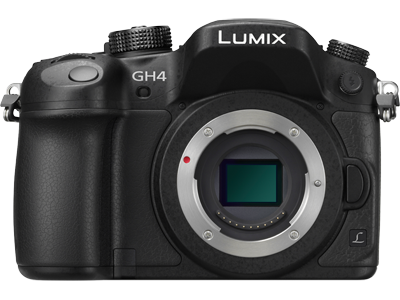
Panasonic LUMIX GH4
|
| |
| Recommended Mirrorless Cameras: |
Sony A7:
The Sony A7 full frame is currently the smallest, lightest full frame camera available. In addition to the full frame sensor, this camera can also record video at a higher frame rate for better movement and action shots. (The A7s can shoot in 4k, but currently lacks onboard recording of 4K video. The Atmos Shogun recorder can be added to record 4K video. It and a housing are due out soon.)
Image sensor (A7): Exmor CMOS (35.8 x 23.9mm) 24.7 Megapixels
Image sensor (A7S): 35mm full frame Exmor CMOS (35.8 x 23.9mm) 12.4 MP
Best video setting - 1920 x 1080 at 60 fps
|
Panasonic LUMIX DMC-GH4: OUR PICK
The Panasonic GH4 – is THE 4k mirrorless camera of choice for video. The Panasonic GH4 delivers professional video, including cinema quality 4K video with onboard 4k recording in a huge array of formats. (Check out the article on the resource page of our website on how to set up this camera for shooting underwater.)
Image sensor: Live MOS Sensor 16.05 megapixels
Best video setting (depending on your editing capability):
Cinema 4K: 4096x2160 at 24 fps
QFHD 4K: 3840x2160 at up to 30 fps
HD: 1920 x 1080 at 60 fps
|
| |
Sony A6000:
The Sony A6000 mirrorless camera is almost as small as a compact camera, but has a cropped frame sensor as large as many DSLRs. It also has an extremely fast auto focus. The a6000 offers complete control over exposure settings during video recording: you can choose anything from program mode to full manual.
Image sensor: Exmor™ APS HD CMOS (23.5 X 15.6mm) 24.7 MP
Best video setting - 1920 x 1080 at 30 fps
|
Olympus OM-D E-M1:
While the Olympus E-M1 micro four thirds camera does a really great job, even surpassing some others in this category for photos, the video quality is lagging a bit behind. The video specs are good enough to for an enthusiast videographer, but not quite advanced enough for serious video shooting. However, if photography is your priority and video second – the EM-1 is a great option.
Image sensor: 4/3 Live MOS Sensor
Best video setting - 1920 x 1080 at 30 fps
|
_________________________________________________________________________________
|
DSLR Cameras
DSLR cameras have the advantage of shooting video in any of the camera modes, with any settings – just with a push of a button. The one draw back with DSLRS is the autofocus capabilities. Autofocus is best for underwater shooting since manual focus can be challenging or unavailable. Since auto focus is the biggest issue when shooting underwater with a DSLR – focus capabilities are listed for each camera. When there are not focus disruptions, DSLR cameras get extremely nice, high quality, crisp video. DSLR video is a little more work, but with the choice of lenses and the quality it produces – it is well worth the effort.
|
|
Advantages:
- DSLRs can really do the best job in low light settings.
- They have the largest selection of high quality lenses.
- There are some lens ports that give you manual control over focus – for DSLRs without continuous autofocus.
- Really nice wide angle, including fish-eye and delivers the best over/under shots.
- Most of the Full Frame DSLRs have 2 memory card slots for more HD video storage.
|
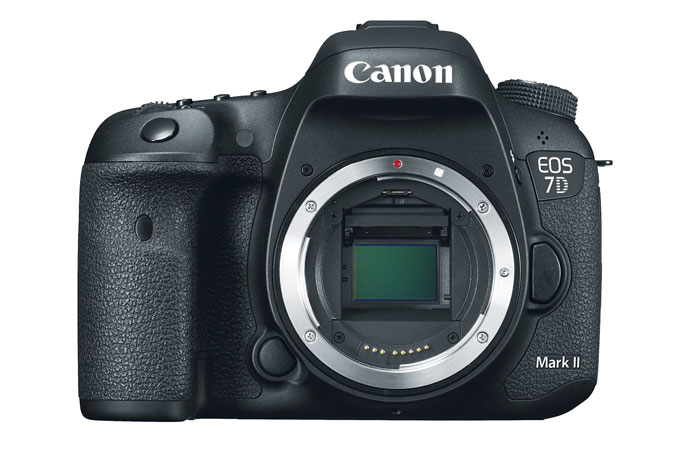
Canon 7D Mark II |
| |
| Recommended CROPPED FRAME DSLR cameras |
Canon Rebel SL1:
The Canon SL1 is one of the most affordable DSLR options. It provides good auto focusing for underwater, since it has the Movie Servo AF that works in concert with Canon STM lenses for smooth and quiet continuous AF.
Image sensor: CMOS Sensor 18.0 megapixels
Best video setting - 1920 x 1080 at 30 fps
|
Canon EOS 7D Mark II: OUR PICK
The Canon 7D Mark II has the best video control and AF out of all the DSLRs in this article, so it is the current top choice for an underwater video DSLR. The 7D Mark II introduces a brand new autofocus (AF) module inspired by the professional level AF system in the Canon 1 DX. To combat challenging focus scenarios, the center AF point in the 7D Mark II is both dual cross-type and high-precision when a f/2.8 or faster lens is attached.
Image sensor: High-sensitivity, high-resolution, large single-plate CMOS 20.2 MP
Best video setting (7D Mark II) - 1920 x 1080 at 60 fps
|
Nikon D7100:
The Nikon D7100 provides full-time autofocus and manual exposure control during video recording. It has some better imaging features, but the AF is not as smooth as the SL1 and the D7100 is quite a bit more expensive.
Image sensor: DX 23.5 mm x 15.6 mm 24.1 MP
Best video setting - 1920 x 1080 at 30 fps
|
|
| Recommended FULL FRAME DSLRs cameras |
Nikon D810:
The Nikon D810 is a direct rival to the Canon 5D Mark III – with similar video capabilities and quality. It does have AF ability while shooting video, but there will still be “seeking” problems, so it will not get smooth auto focus.
Image sensor: FX 35.9 mm x 24 mm 36.3 MP
Best video setting - 1920 x 1080 at 60 fps
|
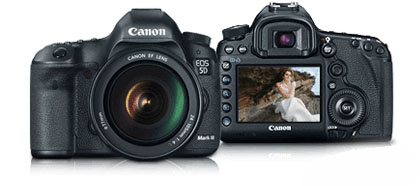
Canon 5D Mark III
|
| |
|
Nikon D750:
The newest Nikon full-frame has greatly improved video features and controls over the older D610, while still retaining it’s smaller size. But once again, with lesser AF ability this Nikon is more expensive than both the Canon 70D and 7D Mark II.
Image sensor: FX 35.9 mm x 24 mm 24.3 MP
Best video setting 1920x1080 at 60 fps
|
Canon EOS 5D Mark III: OUR PICK
The Canon 5D Mark III was really the camera that made video on DSLRs popular and it has been an industry favorite for video production and indie films. Keep in mind - video is not shot with auto-focus on the 5D Mark III.
Image sensor: High-sensitivity, high-resolution, large single-plate CMOS 22.3 MP
Best video setting (5D Mark III) - 1920 x 1080 at 30 fps
|
|
|
_________________________________________________________________________________
|
Consumer Camcorders
Due to the popularity of still cameras with video capability, camcorders don’t seem to be used as much for underwater video as they used to. But, if you know video is your number 1 priority – camcorders really can get great footage in all situations. Canon, Sony and Panasonic make some good camcorders. Many of the new HD camcorders get great results, with image quality good enough to be projected on a full size movie screen. I think if you are just doing video, this is a way to get high quality HD video with a lot less confusion or additional parts.
|
|
Advantages:
- Menus are much simpler (geared to just video) – yet you can still do things like manual white balance and higher frame rates.
- Some camcorders have options for memory – an internal memory as well as a memory card slot, or 2 card slots – for tons of storage.
- One of the best advantages for underwater shooting – camcorders have remarkable autofocus capabilities. Camcorders can establish and track focus without "seeking," making manual focusing completely unnecessary.
- A camcorder will adjust smoothly and rapidly from one condition to the next when there is changing light.
- With built-in lenses, they cover most imaging scenarios, from macro to wide, but you can also attach additional lenses.
- Since there is no longer a need to use tape, camcorders have gotten nice and small.
- Image stabilization, the camera does the work of holding the image steady.
|
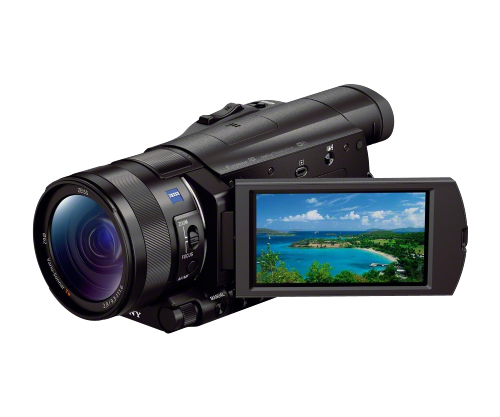
Sony AX100
|
|
| Recommended Camcorders: |
Canon Vixia HF G30:
VIXIA HF G30 offers numerous professional-quality features, including a Genuine Canon 20x HD Video Lens and 8-Blade Circular Aperture for superb video quality and natural, beautiful background blur. And new Dynamic SuperRange Optical Image Stabilization helps ensure your subjects are virtually blur-free. Great image stabilization and fast autofocus.
Image Sensor - 1/2.84 inch HD CMOS Pro
Best video setting - 1920 x 1080 at 60 fps
|
Sony AX100: OUR PICK
Capture your underwater vision in breathtaking 4K Ultra HD with the Sony AX100. Footage is captured with true cinematic depth due to the 1" image sensor. The new BIONZ® X image processor also enables the camcorder to create more naturally vivid and lifelike image quality, and higher resolution imagery with it’s ability to record at 120p. Great image stabilization, exceptional detail, advanced noise control and fast autofocus.
Imaging Sensor : 1 inch (13.2mm x 8.8mm) back-illuminated Exmor R® CMOS
Best video settings - 4K: 3840×2160/30P - OR - HD: 1920 x 1080 at 60 fps
|
_________________________________________________________________________________
|
Professional digital video
There are so many options with Professional digital video – from the broadcast standard Sony XDCAM camcorders — to the cinematic RED Epic Series. Gates and Nauticam has housings for them, so - the sky is the limit… or maybe all the water in the world is!
|
|
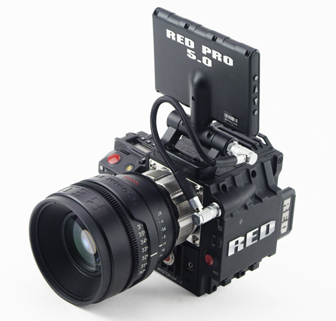
|
| |








